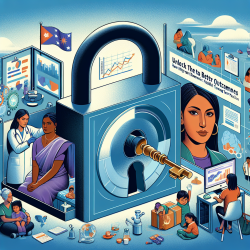In the bustling environment of a classroom, children must navigate a myriad of sensory stimuli while focusing on relevant tasks. The recent study, "The development of attentional control mechanisms in multisensory environments," provides critical insights into how attentional control mechanisms develop in children, particularly in multisensory contexts. This blog explores how practitioners can leverage these findings to enhance their skills and improve outcomes for children.
Key Findings from the Study
The study compared the attentional control mechanisms of 5-, 7-, and 9-year-olds with adults using a multisensory spatial cueing task and 129-channel EEG recordings. Here are the key findings:
- By age 7, children exhibit adult-like visual attentional control, as evidenced by their behavior and EEG patterns.
- Multisensory control mechanisms, however, are not fully developed in children and only start to show adult-like EEG patterns at age 9.
- Traditional N2pc analyses were less sensitive to developmental changes compared to multivariate electrical neuroimaging (EN) analyses.
Practical Implications for Practitioners
Understanding these developmental trajectories can help practitioners tailor their approaches to better support children's attentional control in multisensory environments. Here are some actionable steps:
1. Focus on Visual Attentional Control for Younger Children
Given that visual attentional control mechanisms are adult-like by age 7, practitioners should focus on enhancing these skills in younger children. Activities that require children to focus on specific visual stimuli while ignoring distractions can be beneficial. Examples include:
- Visual search games where children find objects of a specific color or shape amidst distractors.
- Tasks that require matching or sorting based on visual attributes.
2. Gradually Introduce Multisensory Tasks
Since multisensory control mechanisms develop later, it is essential to gradually introduce multisensory tasks to children. Start with tasks that combine visual and auditory stimuli in a controlled manner and progressively increase complexity as children grow older. Examples include:
- Listening to a story while following along with pictures.
- Interactive activities that require responding to both visual and auditory cues.
3. Use EEG and EN Analyses for More In-Depth Assessments
The study highlights the value of EN analyses over traditional N2pc analyses in capturing developmental changes. Practitioners with access to EEG technology should consider using EN analyses to gain deeper insights into children's attentional control mechanisms. This can inform more personalized and effective intervention strategies.
Encouraging Further Research
While the study provides valuable insights, it also opens the door for further research. Practitioners are encouraged to explore additional studies and stay updated with the latest findings in the field of developmental cognitive neuroscience. This continuous learning will enable them to apply the most effective techniques and strategies in their practice.
To read the original research paper, please follow this link: The development of attentional control mechanisms in multisensory environments.










